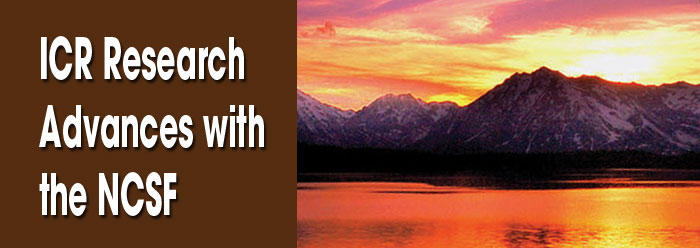The research wing of ICR has an impressive slate of research projects underway. As announced in October, ICR has launched a new foundation, the National Creation Science Foundation (NCSF), which will consider research proposals and fund those deemed beneficial. Already several projects have been accepted and funded. Some of these projects were already in progress, while others are new and innovative.
For instance, Dr. Steve Austin has commenced a project in response to the upcoming 150th anniversary of Darwin's On the Origin of Species, published in 1859. Evolutionists plan to make the occasion a major propaganda coup. Darwin started his voyage on the Beagle as a nominal Christian and creationist. But he took on board Charles Lyell's recently published book Principles of Geology, which espoused long ages of uniform processes. In Argentina, Darwin applied Lyell's thinking to a river gorge and concluded that it had taken long ages to form. (It is now known that this canyon was formed quickly by major Ice Age flooding.) Darwin applied this misinterpretation to his observations on the Galapagos Islands, and evolutionary uniformitarianism is the result. Dr. Austin proposes to show where Darwin went wrong, rightly interpret the evidence, and produce a short video for ICR that can be used in the ongoing battle for truth.
Dr. Austin will also continue his oversight of the Flood Activated Sedimentation and Tectonics (FAST) research project, which is investigating geologic evidences of the great Flood of Noah's day, mostly in the American Southwest. In November, the FAST scientists met in Nevada to report on progress. Of particular interest was a rather new idea in geology, that many deposits are the result of dynamic underwater mud flows. Dr. Austin recently studied evidence of this in Alaska, where a very thick sequence of exposed strata was formed by the collision of the North American Plate with the Pacific Plate during the Flood. The southerly expression of the collision can be seen in Nevada, the site of several research projects under FAST.
In a related project, geologists Roger Sigler and Van Wingerdon have been studying a major mud slide, embedded with large blocks of rock that reach up to 30 km in length! This slide likely occurred at the onset of the Flood, when "all the fountains of the great deep" broke open (Genesis 7:11).
Both Dr. John Baumgardner and Dr. Clarence Berg are conducting funded projects involving computer simulations of "superfaults." Dr. Baumgardner is examining the famous fault system that rapidly formed the mountains in Wyoming, including the enigmatic Heart Mountain, while Dr. Berg is preparing a numerical simulation of sub-aqueous debris flows. All numerical studies are being conducted on ICR's super computer "Epiphany" under Dr. Baumgardner's supervision. Geologist Dr. Tim Clarey will be looking at catastrophic gravity slides in the same area.
In the November meeting, Dr. Arthur Chadwick reported his studies on an extensive dinosaur fossil site. He sees little evidence of uniformitarian processes or vast spans of time. Rather, all the depositional markers speak of rapid catastrophic processes. Likewise, Dr. John Whitmore and Ray Strom are continuing their multi-year study of the Coconino Sandstone, prominent in Grand Canyon. Long thought to be a fossilized sand dune desert deposit, its formation is better interpreted as giant underwater sand ripples, requiring huge volumes of water flowing at great speeds.
In addition to these ongoing studies, ICR research also encompasses Dr. Dan Criswell's GENE project on genomics and Dr. Larry Vardiman's study of paleoclimates, including storm patterns during and after the Great Flood.
There have been numerous inquiries into the NCSF, and we are coaching new scientists through the process and evaluating their proposals. All-in-all, this is the beginning of a new and productive day in ICR research.
* Dr. Morris is President and Director of Research.
Cite this article: Morris, J. 2009. ICR Research Advances with the NCSF. Acts & Facts. 38 (1): 8.










